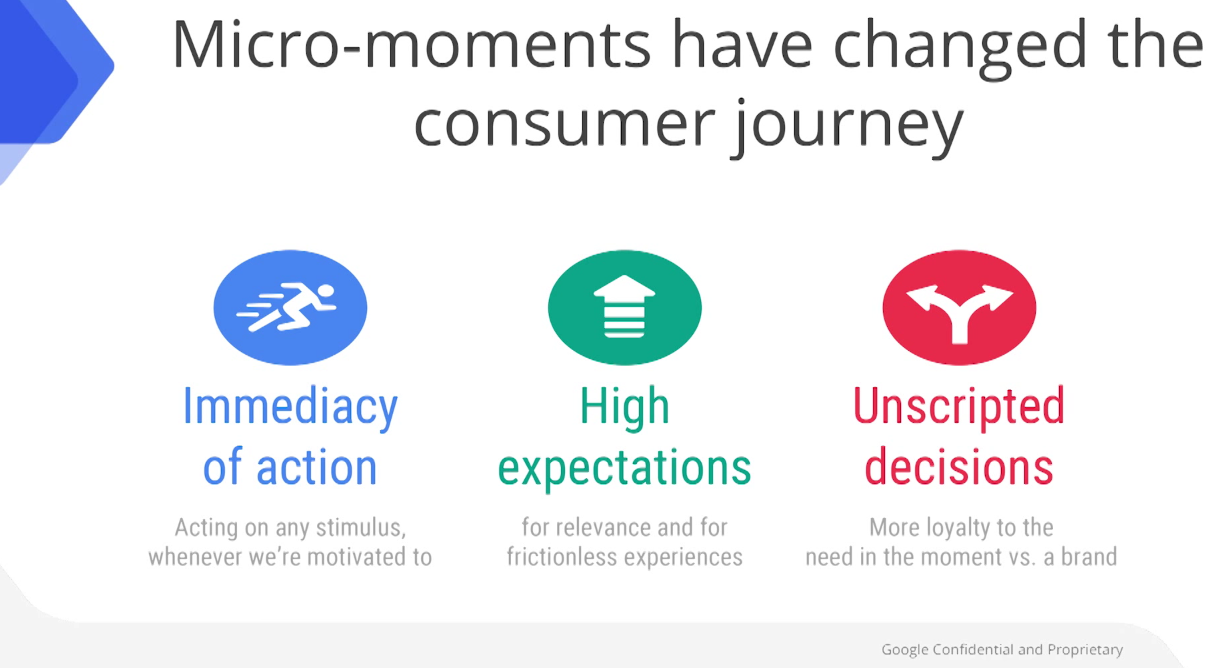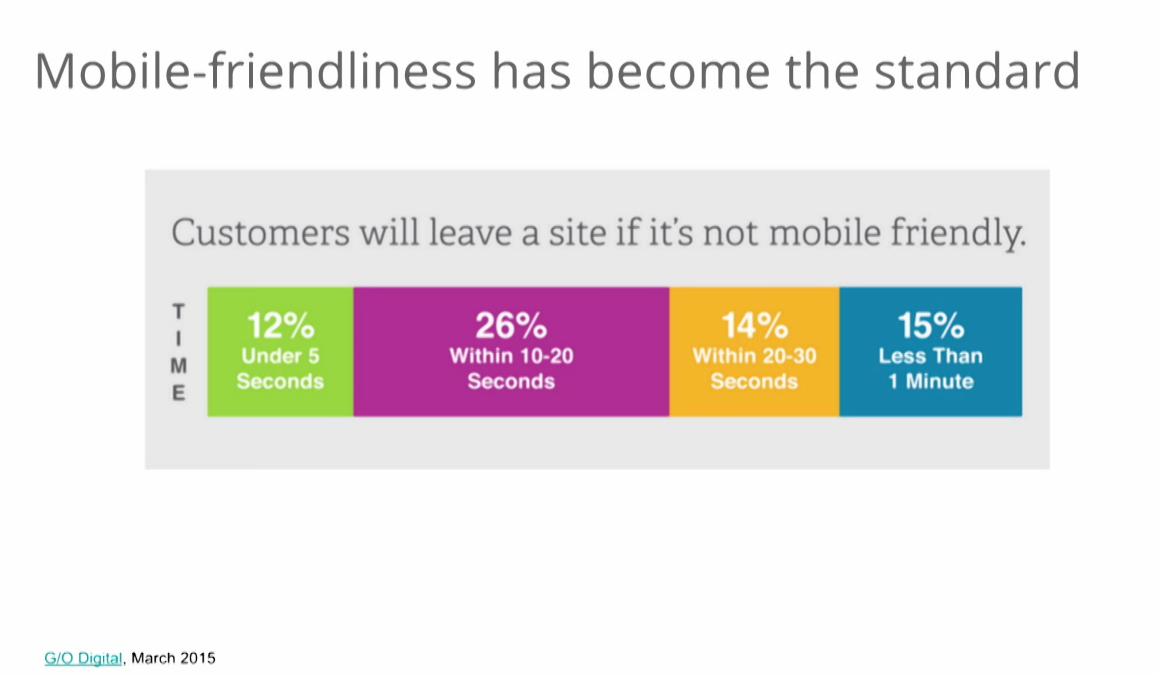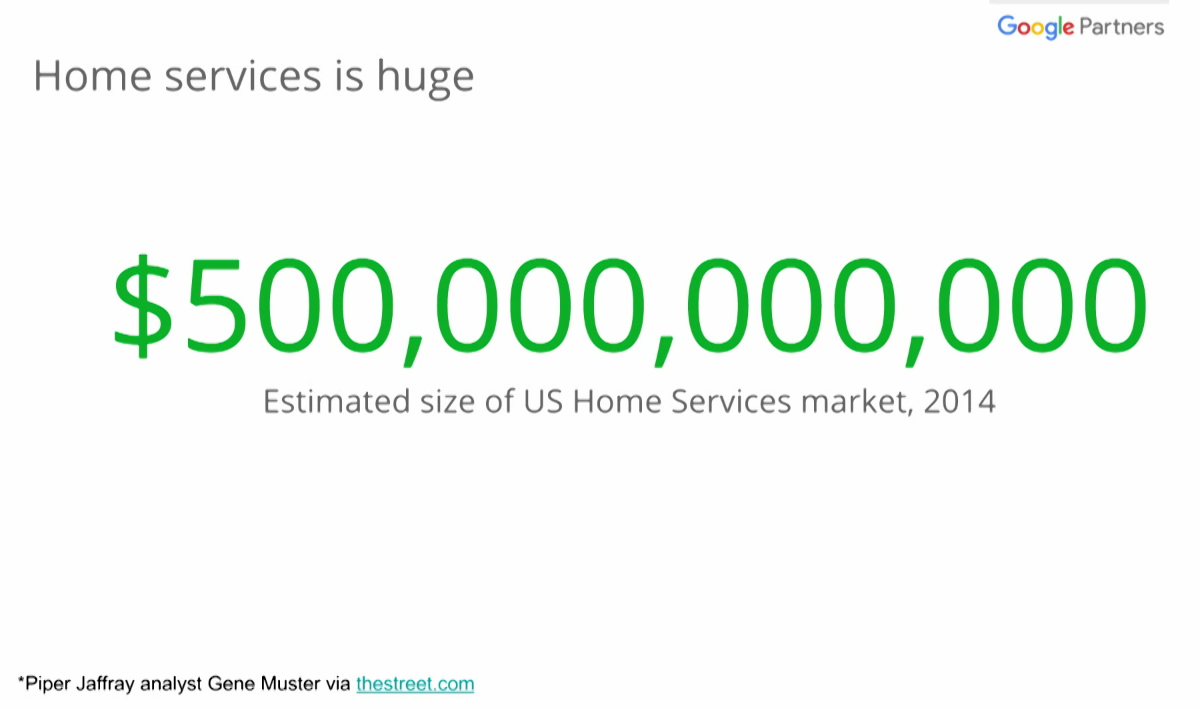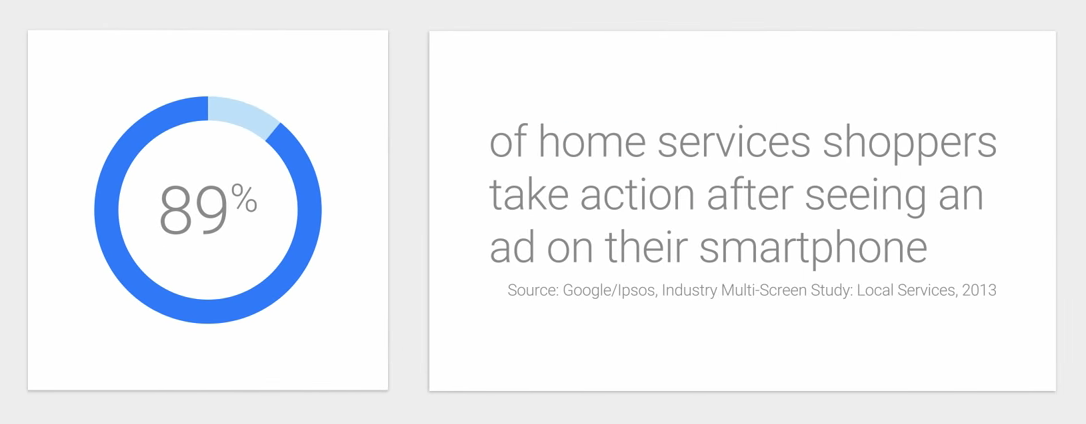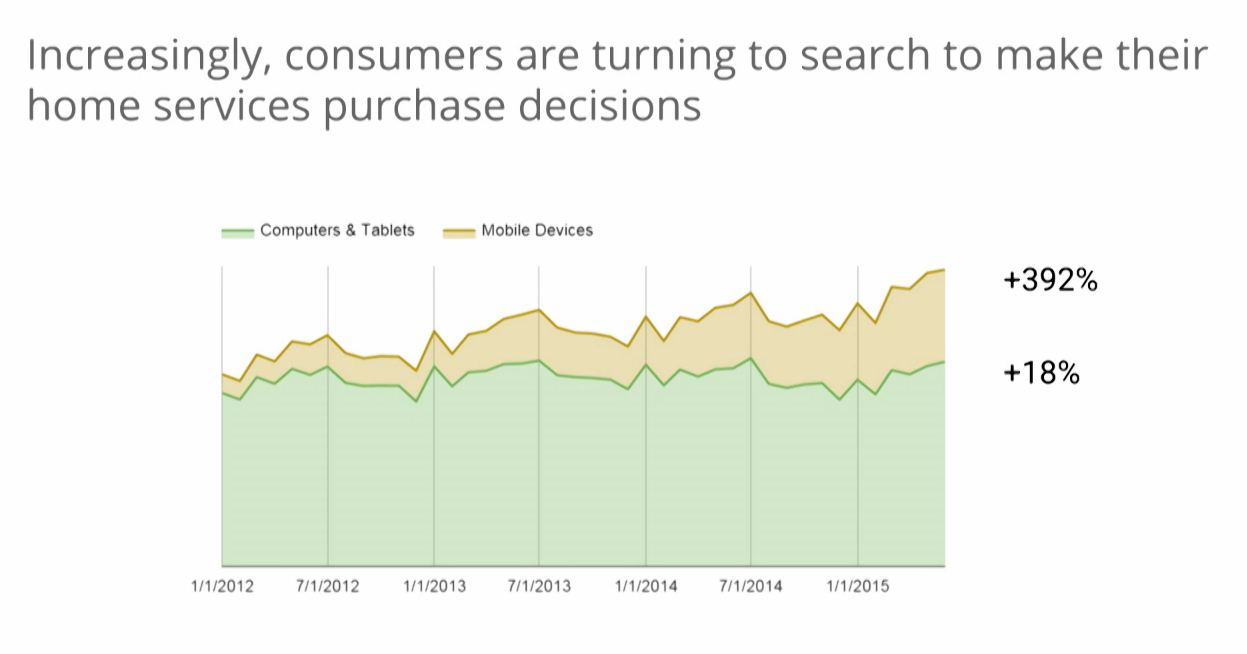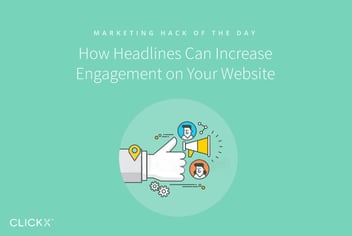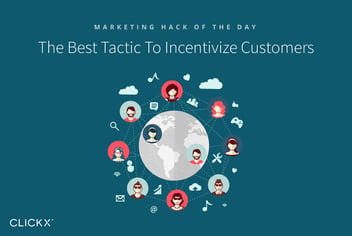What Your Home Services Business is Losing by Not Marketing Online
In today’s day and age, it should come as no surprise to you that people spend a lot of time online, doing everything from uploading photos of friends to looking for apartments to finding who the best home services providers are. Whether someone is looking for a company that cleans out ducts, one that offers housekeeping services, a home remodeler, or virtually anything else in the home services category, chances are they’ll be looking online to find the best options in their area.
In a Google Partners presentation about the effect that mobile advertising and digital marketing have on home services business, we learned that people spend 43.6 percent of their media consumption time on digital devices, but that only 25 percent of our overall advertising investment is on digital services. In order to reach the customers you’re after, you have to start thinking like those customers and working on how to shift the “mental model”—the mental model refers to what people know about your brand/what they believe about it, and this strategy focuses how to change what people think about it.

The “Mental Model” and How It Can Change the Way People Behave
The Mental Model can be best described by telling the story of Roger Bannister. Bannister was the first person ever to run a mile in fewer than four minutes. Previously, the accepted ideology was that if the human body were to work that hard for an extended period of time, the heart would explode from too much blood pumping through it. A physician himself, Bannister thought differently, and after training for two years, invited reporters to a track in Great Britain, where he ran a mile in 3 minutes and 59 seconds.
Within 30 days of completing this accomplishment, however, there were more than 30 other people all over the world who also ran a sub-4-minute mile. Within a year, over 100.
Of course, what had happened was not that the human body became capable of doing more and running faster, but that the mental model shifted—people no longer believed that the sub-4-minute model was an impossible feat.
How does this relate to online marketing and digital advertising, you might be wondering. Easy – think about how you shopped for things even 5 years ago. At that time, you might have gone online to do some research, but generally speaking, people used to spend a lot less time online when it came to researching purchases. The mental model for digital advertising was that whatever was available then was enough.
As a way of illustrating the change, ponder this: About four years ago, the average consumer consulted with 4.1 sources of information about something they were considering purchasing. Now, the average consumer consults with 12.2 sources—about three times the amount of sources they used to check with. If that’s not proof enough that it’s essential for your home services business to participate in digital advertising, consider that the largest segment of buyers are Millennials, and that as of 2013, 13.3 million Millennials were considered the head of their household. Adjusting for scale toward 2018, that number will undoubtedly grow more.
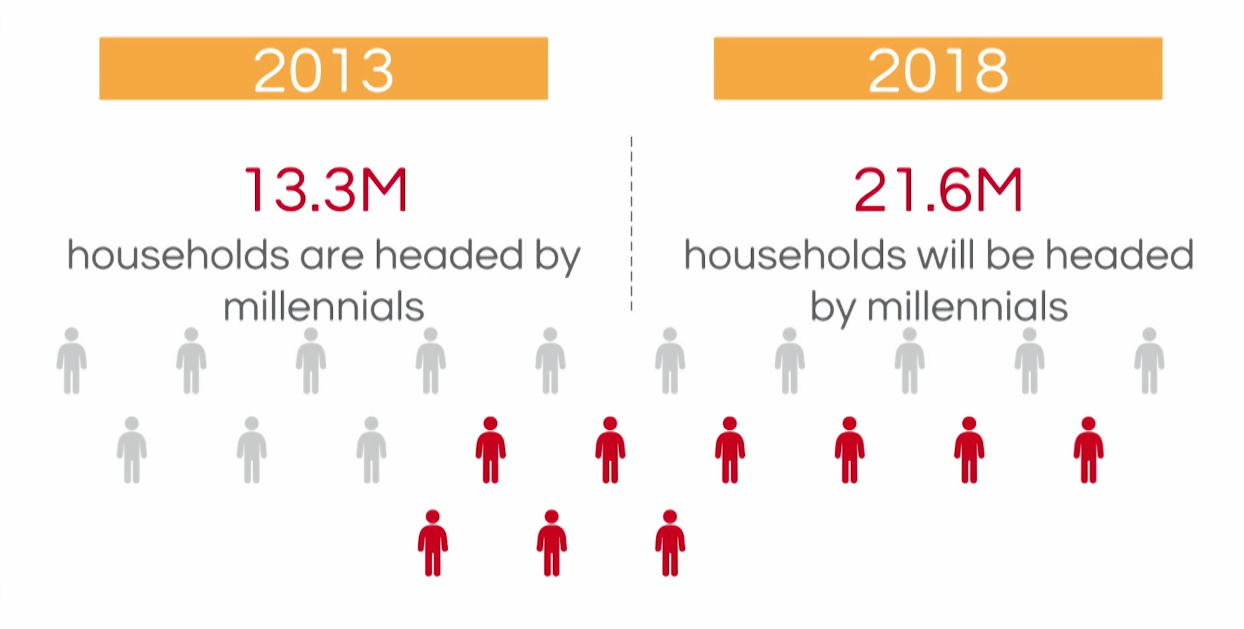
But don’t worry—we’re not about to delve into any sort of thinkpiece-type article about Millennials and advertising and spending. What we are going to do is talk about why Millennials matter when it comes to your home service business’ success.
The First Steps: Stimulus and the First Moment of Truth
When it comes to marketing, the general model is that people are first subjected to a stimulus—noticing the product or brand. From there, people will form their “first truth” about the stimulus. The first truth concept refers to the three to seven seconds that it takes a consumer to come to an opinion of a product on a shelf.
The problem with this, however, is that with home services, there is no product on the shelf for them to notice, so you have to get creative to get them to notice your brand. The aforementioned standard mental model of marketing doesn’t apply to your industry, so you need to find a workaround.
Instead, your stimulus and first truth come when people search online for the service you offer. For instance, if they’re looking for a contractor to remodel their kitchen, they will typically look at, as previously mentioned, 12.2 sources before making a decision. The moment that they initially search for that service is called the “zero moment of truth.” It’s known as that because a consumer won’t have their “first moment of truth” until after they consult those sources and make their choice of which service to choose. By then, they already know they want to work with your business—their first moment of truth is viewing your business as a reliable one that offers the services they’re after.
The Next Step: The Second Moment of Truth
After a consumer has decided that they want to do business with you, they’ll have their second moment of truth after doing business with you: Forming an opinion and posting reviews about the business on social sites like Yelp or Google+. Those reviews become someone else’s zero moment of truth—the first things they see when searching for a service.
[Tweet “From the consumer’s zero moment of truth, your #marketing is the only thing impacting their decision. http://bit.ly/1WnEH7j via @Clickxio”]
How Can You Strategize Your Marketing for Optimal Results?
In order to ensure that you’re getting the most out of people’s “zero moments,” you’ll want to track conversion based on different aspects of your marketing plan. For instance, how effective are:
- Television ads
- Phonebook ads
- Search engine marketing
- Online display
- Remarketing
Once you learn about how effective each channel of marketing is, you’ll be able to make decisions about how to direct your marketing efforts.
Some statistics that are helpful to know before you begin:
- After a consumer sees you in a phone book, they’re 75 percent more likely to do a search for your brand.
- After they see a television ad, they’re 150 percent more likely to search for your brand.
- After they see your online display, they are 250 percent more likely to look you up.
- After seeing your remarketing, they are a whopping 1,043 percent more likely to search your brand, AND, your conversion rate increases by about 60 percent.
Why Did People Start Consulting More Sources Before Making a Decision?
The reason that the number of sources people consult with has increased is simple: Mobile marketing. As few as 15 years ago, people wouldn’t have even thought to research a product or service online, however, nowadays, we practically live online, and not just when it comes to buying things.
Think of the last concert you went to—how many people were holding up phones or tablets taking video or pictures? Nowadays, that’s commonplace. Ten years ago? Not nearly as much.
The same can be said for things like online payments—many people now would not have nearly as much of a problem if their wallets were stolen as they might have a decade ago. This is because with just a few phone calls, they can get all of their cards replaced, whereas with their phones, it’s a whole ordeal getting things replaced, contacts refreshed, etc.
If you look around places like airports and train stations, you’ll see people crowding around electrical outlets—no one wants their devices to die, so they’ll charge them any chance they get, it seems. In a Google survey, 85 percent of respondents said that their mobile devices are a central part of their everyday lives. People have noted that their mobile devices—phones or tablets—signify their connectivity to everything that goes on in life. But even with people using their phones all the time, you might think that all that time is spent on personal things—that you wouldn’t really need to showcase your business online, because consumers will hear about it elsewhere.
You’d be incorrect.
Is Being Online Really That Important?
Sure, people use their phones a lot—that’s not really news. But when it comes to online marketing and advertising, do you really need to do it if you want to succeed? Well, consider this: The average person goes online about 150 times in a day. That’s 150 times of either checking the time, checking their email, Googling something, checking into a restaurant on Foursquare, updating their Facebook, tweeting about current events, and more. Each of those 150 times is a chance for them to learn about your business.
These 150 times are often referred to as “micromoments.” In order to most effectively promote your business and your brand, you’ll need to optimize your marketing to match these micromoments. That means you’ll need things like a mobile-responsive website, retargeting ads, and more—things that cater toward the modern consumer’s short attention span.
Why Is a Responsive Website So Important?
Websites that are responsive make mobile browsing much easier. So much easier, in fact, that a stunning 86 percent of people will leave your website if it’s not responsive. Of those 86 percent, 67 percent of them will go to a competitors website. The amount of potential customers lost just by having a non-responsive website is staggering, and frankly, no one’s business can afford that. Additionally, if your site isn’t mobile friendly, it ranks lower on Google search results than sites that are mobile friendly, meaning people will be less likely to even click on your site in the first place.
Because people can act immediately on a stimulus when they see it online, they have higher expectations for the advertising/marketing quality. You have to be able to convince a potential consumer that your business is the one worth being loyal to. Consumers are more likely to work with a brand that offers what they need as well as an easy experience getting it—they’ll search what they need, when they need it, and pick the company that appears to best suit those needs at that time. In other words, they’re going to be more loyal to their need than they will be toward any brand, and it’s up to you to figure out how to market toward their need. In order to figure that out, it’s helpful to learn about some the search trends and insights related to the home services industries.
Search Trends and Marketing Insights
Now that you know about the mental model of marketing and how important it is to be able to be found online, it’s time to learn about the home services category as a whole.
First things first, let’s discuss how big the industry is.
What is Included In the Home Industries Category?
The home services industry is a 500 billion dollar-a year industry in the U.S., and includes a variety of different company categories and service providers, such as:
- Locksmiths
- Housekeepers
- Weed and pest control
- Plumbers
- HVAC
Over the next few years, that $500B+ figure is expected to increase even more, so it’s important to learn how consumers try to find new home service providers.
How Do People Find You?
Consumers both young and old look for recommendations from experts when looking for home service providers, as well as reviews on sites like HomeAdvisor and Yahoo. 60 percent of people 25-34 years old are more likely to do their research via those review sites, while 55 percent of people 18-24 will find you simply through an internet search, so it’s essential to target both review sites as well as your ranking on results pages.
What’s more, many of these searches are conducted on mobile devices—people ages 18-44 say they are more likely to conduct their searches for home service providers on a phone or tablet.
Interestingly, Google is beginning to surpass review sites when it comes to what consumers will trust more when they are researching.
What’s more impressive, 97 percent of consumers turn to the internet to research a home service provider in a local area where they will eventually purchase a product or service, so it’s nearly mandatory for you to target local areas if you want to succeed.
If you’re not sure where to begin with your marketing, ask your Google partner or marketing company about what your strategy should be, particularly with mobile marketing.
[Tweet “60% of people ages 25-34 are more likely to do research via online review sites. http://bit.ly/1WnEH7j via @Clickxio”]
Where Are Most People Doing Their Research?
Over the years, there has been an increase of 392 percent of mobile device usage. 92 percent of consumers do their home service research on a home computer or tablet, while 46 percent of consumers will do their research on a smart phone. 45 percent, however, will switch back and forth, from, for example, searching on their phone on their lunch break, then continuing the search later on at home.
You’ll want to figure out where and when people are searching for your home service, and optimize your advertising and marketing toward those times and devices—lunchtime on smartphones, for instance. An impressive 89 percent of home service shoppers will take action after seeing an ad on their phone, but not it won’t always be a purchase or a phone call—it may be something like simply clicking on your ad. About 40 percent of those people will go on to look for more information about your services, in fact.
What Are Some of the Barriers Your Customers Face When Searching on Mobile?
Unfortunately, one of the main barriers of searching on mobile is the same reason that mobile searching is so easy—it’s a small screen in your pocket. Many customers will not feel comfortable making their purchase for a home service from a smartphone, so it’s in your best interest to create calls to action that offer a consultation or appointment, so that your customers don’t feel they have to make a decision on the spot.
For this reason, you should also make sure that not all of your marketing is mobile—you need a desktop strategy, too, as well as a strategy for word of mouth.
Since 2013, home services searches have increased 19% from year to year, and most of those searches have increased on mobile devices.
How Can You Translate This Data Into Your Strategy?
Having all of this information at your disposal is all well and good, but the really important part is being able to turn it into effective marketing plans for your home services business. Turning this into a marketing plan is as easy as talking to us at Clickx—we’re ready to get to work as your Google partner, helping you find and execute the most effective marketing plans.
Our goal as your marketing partner is to change the mental model for home services business owners. We want you to have a variety of solutions available to you for marketing your business, and our goal is the same as yours–we want you to succeed. We offer a variety of services and products that help boost you to the top of your game. Learn more about them today:
-
Bold Local
It’s essential for your website to be easily found by people who are looking for home services. When they search for the things that your business does, you’ll want to be sure they find you, and you do this with Bold Local, by employing what’s called “local SEO.” Local SEO is a combination of different search strategies, modified to ensure that the right type of visitor is the one who ends up visiting your site. We use this to effectively target audiences in the areas that matter to your business most, and by combining localized content marketing with optimized local listings and citation audits, we’ll help ensure your business is more visible online in specific locations.
-
Promote Search
Our PromoteSearch technology solution helps find things that may be causing your website to underperform. There are five different phases of PromoteSearch. First, you’ll define your goals, which will be used to drive more valuable traffic to your website. Second, we’ll help develop a strategy to help meet your specific goals, including monitoring of linking structure, site design, metadata, and much more. Third, on-site optimization will take place continually to improve your visibility online and create a more user-friendly experience for your visitors. Fourth is implementing the use of Evergreen Blogs and content marketing, which keeps relevant content at the forefront of your marketing venture. Finally, the final phase–analytics and reporting. In this step, data is analyzed and tracked, and search engine algorithm changes are catered to, ensuring your website continues performing highly. PromoteSearch is how we completely manage your online presence.
-
Forth Social
To ensure that more and more people begin engaging with your brand when they search for home services, it’s important to have a strong social media presence. Forth Social is the tool we use to manage your social accounts (Facebook, Twitter, and Google+) with regards to customer outreach, promotions, marketing, and more. Contact us anytime to learn more about our Forth Social package pricing. and how this optimizes your social presence.
-
Adex
Adex is our Google Advertising solution that includes display ads and remarketing ads. We grow your campaign from the ground up and monitor the results and progress of your PPC ads, and we break down the data into easy-to-understand reports. You’ll be able to see for yourself how your budget is being used and which strategies are working the most effectively, allowing you to tweak the strategy and maximize ROI. This also includes Google Product Ads, which are image ads that increase click-through rates, thanks to product-specific information. This information increases the likelihood of highly qualified leads, which, as you know, are more likely to turn into customers. Adex also includes things like social media ads, call tracking, landing page design, ProRetargeting (display ads on related sites that incorporate user-specific behavioral targeting, so the visitors you get are the visitors you want).
Ready to learn more about how Clickx, a Google Certified Partner, can effectively and expertly manage your ad, marketing, and PPC campaigns? Request a grading of your website today, using Clickx’s website grader, and find out how you can attract more traffic, engage your visitors, and convert more customers.


-1.webp?width=1261&height=706&name=download%20(3)-1.webp)

